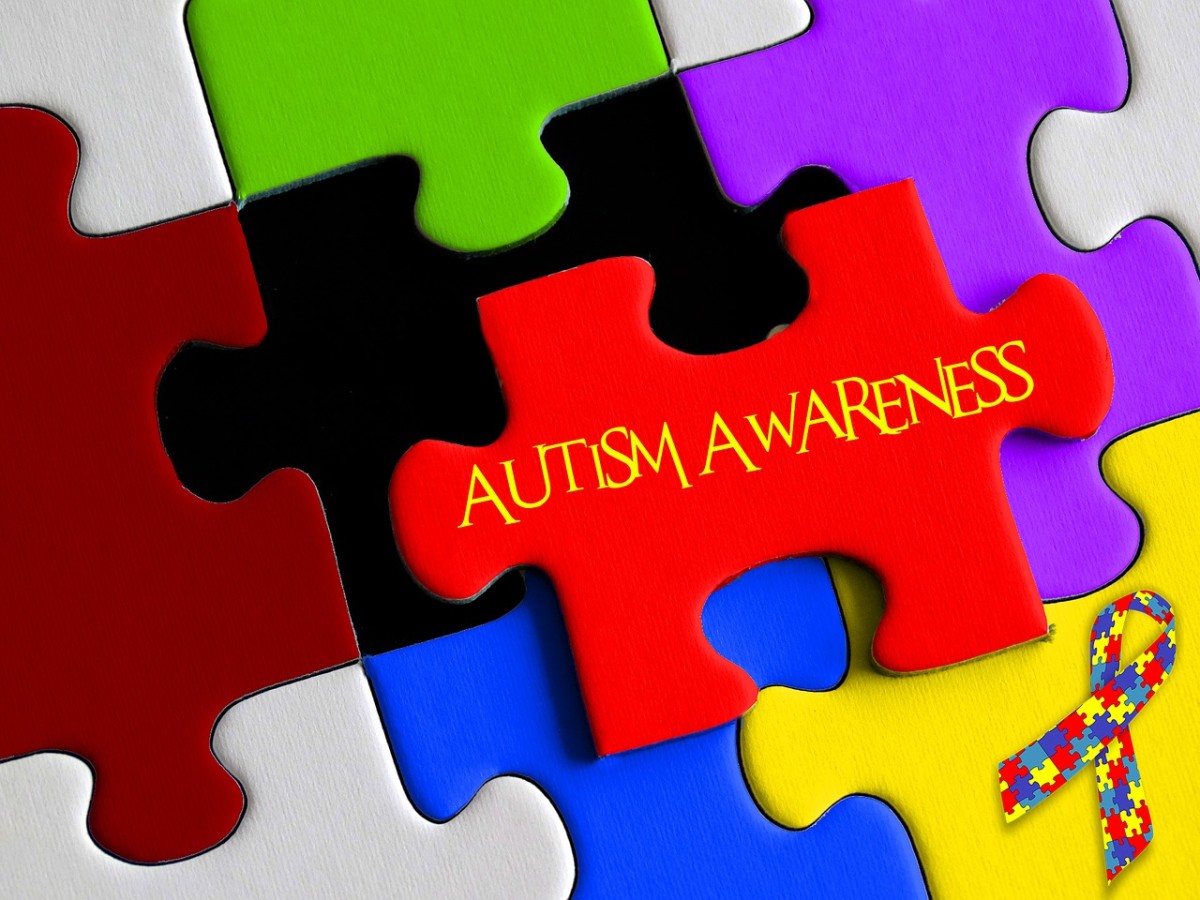- HubPages»
- Health»
- Diseases, Disorders & Conditions»
- Autism & Asperger's Syndrome
Effect of Occupational Therapy on Autism Outline



I) Introduction/Literacy Review
A) Identify Topic
1) I will be focusing my study on developmental psychology with an emphasis on the effect occupational therapy has on improving skill generalization and sensory integration in people with autism. This topic is important because skill generalization and sensory integration are both necessary in a person becoming an active member of society.
B) Article Summary and Critique
1) Baric’s et al., (2016) study examines the occupational transition process of those with autism and ADHD; the results were based on participants who were recruited already used municipality services meaning might be more willing to make use of support. The study aligned with the expectations of the principle of integrity when it provided descriptions on the selection of the participants.
2) Schaaf’s et al., (2013) study evaluated whether intervention of occupational therapy is effective in lessening sensory dysfunction in children with autism; the fact that the study was designed to gather preliminary efficacy information could indicate that the study was too short to obtain a full finding. The study aligned with the principles of beneficence and non-maleficence when the psychologist use of the Sensory Integration Fidelity Measure and the goal attainment scale.
3) Koenig, Buckley-Reen, and Garg’s (2012) study examined the effectiveness of the yoga on children with autism; the use of a convenience sample indicates that there may have been an inherent selection bias. The study aligned with the expectations of the principle of integrity when it altered all the identifying information of the participants.
4) Holm’s et al., (2014) study scrutinized the effect of different doses of therapeutic horseback riding on parent-nominated target behaviors of autistic children; the results were based on a small sample of only three autistic boys. The study design was not appropriate because it involved untrained biased evaluators; in this way, it also failed to meet the principle of integrity from the APA Ethical Principles of Psychologists.
5) Janeslätt, Kottorp, and Granlund’s (2014) study evaluated the effect of using time aids on special needs children who have difficulties with time management; the different disabilities of the participants might affect communication. The fair treatment and grouping of the participants was an example of the APA Ethical Principles of Psychologists known as justice.
6) Llambias, Magill-Evans, Smith, and Warren (2016) investigated the effect of horses in improving engagement in autistic children; the use of multiple strategies could skew the cause of the results. The study demonstrated the principle of respect for dignity when all participants were checked to be comfortable and not scared with interacting with the horses before being made into research participants.
C) Hypothesis
1) Occupational therapy improves skill generalization and sensory integration in people with autism, which allows them to become an active member of society.
2) I based my hypothesis on the results of Schaaf’s et al., (2013) study and Janeslätt’s et al., (2014) study as both studies provided results proved that those with autism could improve their skill generalization and sensory integration.
II) Methods
A) An experimental research design is the most appropriate research design as my hypothesis requires causal based research. It will allow for the measuring of the results from occupational therapy in instilling skill generalization and sensory integration.
B) Data Collection
1) Participants will be between the ages of 6 and 12 and have a confirmed diagnosis of autism from a licensed psychologist based on the results of the Autism Diagnostic Interview-Revised (Lord et al. 1994),
2) The participants will be evaluated monthly on their skill generalization, sensory integration, communication, social engagement, and task engagement after receiving occupational therapy.
3) To protect the participants all identifying information will be altered before being stored on a secure server at the testing facility and the data will only be available to those involved in the study.
III) Discussion
A) The articles I evaluated all support my research proposal in that they demonstrate the fact that autistic children can be taught skills like generalization and sensory integration.
B) I would convey my research findings to my audience through publishing the study with the Journal of Autism and Developmental Disorders as well as other academic peer reviewed journals with a focus on autism and developmental disorders. I would write it using a case study format and it would reference all aspects of the research from the recruitment of participants to the methodology of the study and to the results of the study.
C) Further research could be conducted that goes in different directions from my research proposal. For instance, my proposal focuses on those with autism, but it could easily be rewritten to focus on a different developmental disorder. Future research could be conducted on: defining being an active member of society, long term effects of occupational therapy on helping an autistic individual secure employment, and/or the skills that occupational therapy can successfully teach. The amount of further research that could be done is limitless as there is much not currently known or studied about autism and occupational therapies effect on it.
References
Baric, V.B., Hemmingsson, H., Hellberg, K. et al. J Autism Dev Disord (2016). The Occupational Transition Process to Upper Secondary School, Further Education and/or Work in Sweden: As Described by Young Adults with Asperger Syndrome and Attention Deficit Hyperactivity Disorder. Journal of Autism and Developmental Disorders. Doi:10.1007/s10803-016-2986-z
Elsabbagh, M., Divan, G., Koh, Y., Kim, Y. S., Kauchali, S., Marcín, C., . . . Fombonne, E. (2012). Global Prevalence of Autism and Other Pervasive Developmental Disorders. Autism Research, 5(3), 160-179. doi:10.1002/aur.239
Holm, M. m., Baird, J., Kim, Y., Rajora, K., D'Silva, D., Podolinsky, L., & ... Minshew, N. (2014). Therapeutic Horseback Riding Outcomes of Parent-Identified Goals for Children with Autism Spectrum Disorder: An ABA′ Multiple Case Design Examining Dosing and Generalization to the Home and Community. Journal Of Autism & Developmental Disorders, 44(4), 937-947.
Janeslätt, G., Kottorp, A., & Granlund, M. (2014). Evaluating intervention using time aids in children with disabilities. Scandinavian Journal Of Occupational Therapy, 21(3), 181-190. doi:10.3109/11038128.2013.870225
Llambias, C., Magill-Evans, J., Smith, V., & Warren, S. (2016). Equine-Assisted Occupational
Therapy: Increasing Engagement for Children with Autism Spectrum Disorder. American Journal Of Occupational Therapy, 70(6), 1. doi:10.5014/ajot.2016.020701
Lord, C., Rutter, M., & Couteur, A. (1994). Autism diagnostic interview-revised: A revised version of a diagnostic interview for caregivers of individuals with possible pervasive developmental disorders. Journal of Autism and Developmental Disorders, 24(5), 659–685.
Koenig, K., Buckley-Reen, A., & Garg, S. (2012). Efficacy of the Get Ready to Learn
Yoga Program Among Children With Autism Spectrum Disorders: A Pretest-Posttest Control Group Design. American Journal Of Occupational Therapy, 66(5), 538. doi:10.5014/ajot.2012.004390
Schaaf, R. C., Benevides, T., Kelly, D., & Mailloux, Z. (2012). Occupational therapy and sensory integration for children with autism: A feasibility, safety, acceptability and fidelity study. Autism: The International Journal of Research and Practice,. doi:10.1177/1362361311435157
Schaaf, R. C., Benevides, T., Mailloux, Z., Faller, P., Hunt, J., Hooydonk, E. V., . . . Kelly, D.
(2013). An Intervention for Sensory Difficulties in Children with Autism: A Randomized Trial. Journal of Autism and Developmental Disorders, 44(7), 1493-1506. doi:10.1007/s10803-013-1983-8






